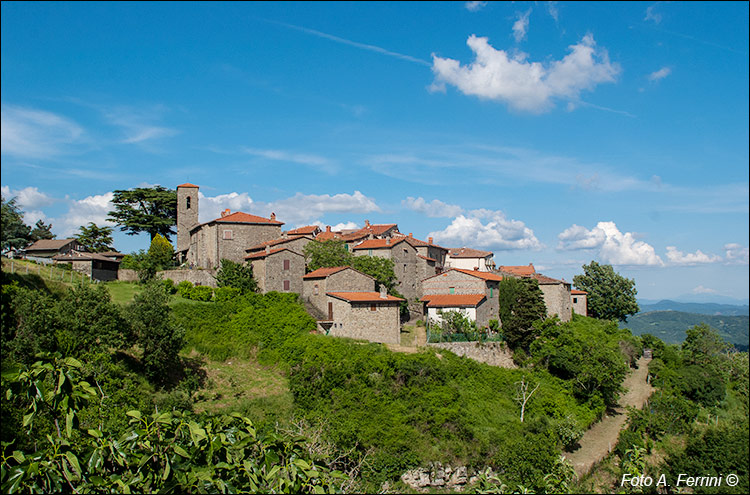Sulla via del ferro e della transumanza
itinerario sulle pendici sud Pratomagno da Pontenano al Passo della Crocina
Italiano
IN CAMMINO SU UNA VIA DELLA TRANSUMANZA 1
Vista di Pontenano dal piccolo abitato di Cerreto. Da questa immagine si capisce benissimo come fosse dominante la posizione di questo castello che è ricordato come il più potente del Pratomagno. In un documento fiorentino del 1385, periodo in cui Arezzo e le sue terre passarono sotto il dominio della città del giglio, è riportato che a Pontenano erano presenti duecento uomini armati. Probabilmente non è proprio così, vi erano duecento uomini addestrati per essere pronti ad armarsi, ma che nella vita facevano i mestieri di allora in questi luoghi: boscaioli, contadini, pastori, carbonai. E anche i fabbri visto che a Pontenano vi era una “fabbrica grossa di ferro”.
Il castello fu distrutto dai fiorentini nel 1426, la rinascita di Pontenano come paese può datarsi al secolo successivo.
View of Pontenano from the small town of Cerreto. From this image it is clear how dominant the position of this castle was, which is remembered as the most powerful in Pratomagno. In a Florentine document from 1385, a period in which Arezzo and its lands came under the dominion of the city of lily, it is reported that two hundred armed men were present in Pontenano. This is probably not exactly the case, there were two hundred men trained to be ready to arm themselves, but who in life carried out the professions of those times in these places: woodcutters, farmers, shepherds, charcoal burners. And also the blacksmiths since in Pontenano there was a "large iron factory".
The castle was destroyed by the Florentines in 1426, the rebirth of Pontenano as a town can date back to the following century.


















































































